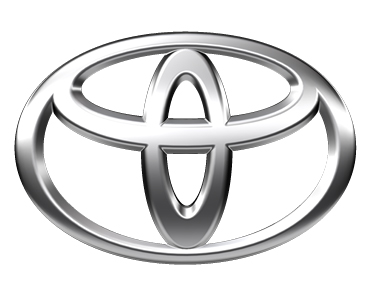17 Apr How big can you build with Open Source?
Imagine you’re sitting in a conference room at Toyota headquarters, and the managers present are arguing over the choice of IT system. Their goal is to optimize customer service and digitally transform the existing approach. Which solution do you think they will choose:
- an open technology that they can adapt to their own way of doing things?
- a closed product from one of the commercial leaders that a significant portion of their competitors have already chosen?
It is in such rooms, during such discussions, that the stories of digital transformation begin. In today’s article, I would like to tell you a few of them. I hope you’ll find inspiration here for times when so many things in the market are uncertain. Besides, even if your business operates on a slightly smaller scale than Toyota, it’s worth looking at what has made the big open source projects successful. It’s a good way to mitigate risk when it comes time to recommend a solution before your board.
Case Study of Open Source
The following stories have several elements in common:
- huge scale of the project
- striving for cost optimization of undertaken investments
- view that it is the technology that should be matched to the organization (not the other way around)
- need to free ourselves from the phenomenon of vendor-lock in
- ability to react nimbly to black swans, i.e., unpredictable situations in our environment
They prove that open source in no longer just domain of IT enthusiasts – it is a strategic choice of the largest players on the market, who value flexibility and successfully build their competitive advantage. Let’s find out what made the decision to use open source software (of various types) in entities such as Netflix, Toyota, Goldman Sachs, the French National Gendarmerie or the NASA space agency. And what effects it has had…

Netflix: From DVD shipper to global streaming giant
There’s a good chance you’re familiar with Netflix success story. It’s a popular example, often cited in business content. They got to where they are today without an outside investor. The funny part is that they offered their shares to their biggest competitor at one point. That competitor was… Blockbuster, which, incidentally, currently operates just one franchise location in the U.S. state of Oregon.
Open source technology has also played an important role throughout this story. When Netflix’s decision-makers moved their business to the Internet (thus abandoning the mail-order model of distributing movies on DVD), they simultaneously forced the considerable challenge of building a flexible streaming platform. Instead of investing in expensive closed-source solutions, they opted for open source code. Their choice was:
- a NoSQL database – Cassandra
- an open operating system FreeBSD
- a container management platform – Kubernetes
- a fault tolerance testing tool – Spinnaker
They became the foundation of an infrastructure that today serves nearly 300 million users worldwide. It is in big part thanks to open source that Netflix has been able to scale faster than its competitors and innovate in ways that have changed the entertainment market forever.
„At Netflix, we jumped on for the ride a long time ago, and we have benefited enormously from the virtuous cycles of actively evolving open source projects.” - Kevin McEntee, VP of Systems & e-commerce Engineering, Netflix

Goldman Sachs: When your bank is open
In the financial world, every second and every dollar matters. Goldman Sachs – one of the world’s largest investment banks, instead of pumping its money into closed „black boxes” from commercial vendors, has sourced open source software for data storage and analysis:
- Apache Kafka – a distributed platform for real-time data streaming and processing.
- Apache Spark – an engine for fast processing of large data sets.
In 2015, the bank even launched a proprietary open source communication platform: Symphony Communication Services. It was created with the entire financial sector in mind, and serves this type of organization to securely exchange information in the form of chat. It resembles Slack or Microsoft Teams, but is designed to meet stringent encryption and data protection requirements and integrate with market news sourcing tools, for example.
Martin Chavez, the bank’s former CIO, commented in an interview:
„It’s amazing that you can now build on top of open source at an abstraction level - it’s just light years beyond what we had in ’93. Now it really becomes a software stack selection problem, which is hard in its own right.” - Martin Chavez, former CIO in Goldman Sachs

Toyota: and “under the hood” – Linux
In 2018, Toyota faced the choice of an operating system for Internet-connected automotive devices. There were to paths:
- bet on an off-the-shelf, popular yet closed SaaS product
- opt for an open technology that can be customized to suit the individual’s way of working
As you might guess, this time too, it fell on software that allows free access to the source code. Locked in a conference room, decision-makers then decided to invest in the Automotive Grade solution from Linux (AGL). As a result, AGL became the heart of the Connected Car platform, and Toyota gained a flexibility that BlackBerry’s QNX or Microsoft’s Embedded Automotive systems, which had previously been considered, could not match.
„We need systems that scale all the way, from embedded to data processing, to be able to deliver our version of the connected car.” - Ken-ichi Murata, Toyota's chief engineer
Interestingly, in the automotive sector, Toyota is not the only one using open source software in its car. GENIVI, a non-profit organization of automotive companies, has also relied on open source code. Its members – including BMW, GM, Pegueot Citroën and Renault – have reached for the MeeGo Linux operating system, for example. It enables embedded devices in cars – such as smartphones, tables, netbooks, and even televisions.
Perhaps you too are already using them in your private car?

NASA: Open Space Document Management
In 2007, the space agency NASA faced the challenge of modernizing its document management system. Their team needed a solution that could handle the complex file workflow processes associated wit missions, scientific research and operational management. What mattered to the purchasing committee was:
- the software’s compliance with federal regulations
- to meet extremely stringent security requirements.
For this reason, among others, proprietary ECM (Enterprise Content Management) systems such as IBM FileNet, Microsoft SharePoint and ECM Documentum had to be rejected out of hand. The choice once again fell on an open source alternative, an open source document management system: Alfresco. The implementation began at the Goddard Space Flight Center and was later expanded to other NASA centers. The Alfresco system (development of the system in 2020 was taken over by Hayland) continues to operate at NASA today and continues to handle a wide range of documents: from technical mission specifications and research reports, to legal documentation, to educational materials and scientific publications. As we read in the project’s case study, thanks to its open architecture, the IT team also integrated Alfresco with other systems running at the agency and adapted its functions to the specific requirements of space processes.
French Gendarmerie: Parlez-Vous Ubuntu?
One of the most spectacular examples of the implementation of open source solutions in public administration is that of the French National Gendarmerie (Gendarmerie National). The process of transformation to open source began there as early as 2001 with the acquisition of open source office software. It culminated in the implementation of the Ubuntu GNU/Linux operating system, which began in 2008. The process proceeded in stages: 5,000 computers were piloted with the new operating system, and then the so-called „industrial phase” began, covering tens of thousands of workstations. By 2015, the plan was to include all Gendarmerie computers in the migration, with a target of up to 70,000-85,000 devices, both those used at headquarters and at local stations.
In practice, the transition to Ubuntu proved surprisingly smooth – most users required no additional training, as the system’s interface was intuitive and key applications (OpenOffice, Firefox, Thunderbird) were already familiar to officers. In addition, the use of open source software allowed standardization and simplification of IT infrastructure management across the organization, as well as rapid response to new needs and implementation of further innovations. The effects of the implementation have been downright spectacular: the Gendarmerie estimates that by migrating to Ubuntu it is saving about €2 million a year on licenses alone, and the total cost of maintaining the IT infrastructure has dropped by up to 40%.
What’s more, it has succeeded in achieving:
- full technological independence
- customizability
- data security.
The example of the French Gendarmerie shows that the implementation of open source software on a massive scale in the public sector is not only possible, but also highly cost-effective.
„As well as simplifying maintenance and improving ease of use, Ubuntu Desktop Edition is saving the police force €2 million a year in license fees alone.” - Jean-Pascal Chateau, commandant, La Gendarmerie Nationale

